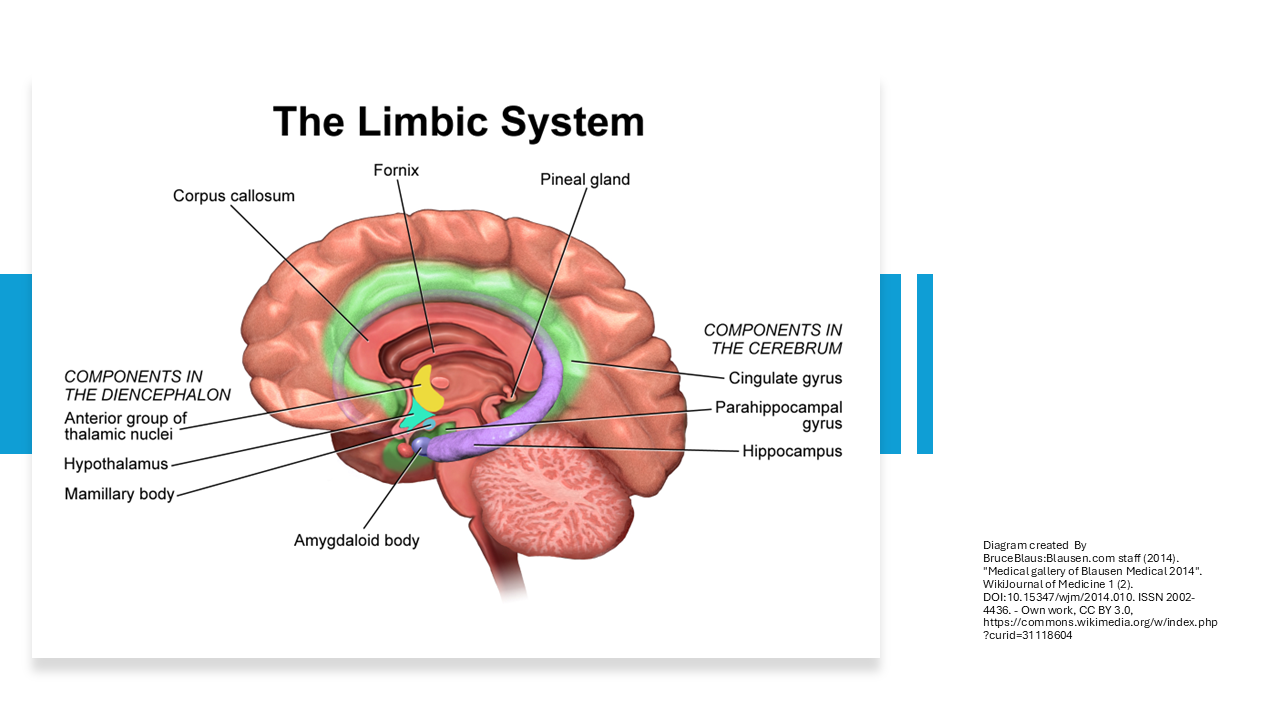
The Limbic System
The Neural Nexus of Emotion, Memory, and Behavior
The human brain is an intricate network of interconnected systems, each contributing to our thoughts, behaviors, and emotions. Among these, the limbic system stands out as a pivotal structure, often referred to as the “emotional brain.”
For us to gain a deeper understanding of ‘The Monkey Mind’ concept, we need basic knowledge of the anatomy and location of the limbic system, its functions, its utilization of neurotransmitters (especially dopamine), and the autonomous effects it has on human behavior.

Anatomy and Location
These structures are primarily located in the medial temporal lobe and extend into regions near the brain’s base. Their positioning allows them to act as a bridge between higher cognitive functions and the more primitive brain centers responsible for survival.
The limbic system is not a single, isolated structure; rather, it is a collection of interconnected regions located deep within the cerebral hemispheres. Its primary components include:
- Hippocampus: Crucial for the formation and consolidation of new memories, as well as spatial navigation.
- Amygdala: Integral to processing emotions, particularly fear, pleasure, and aggression. It helps form emotional memories that influence future responses.
- Cingulate Gyrus: Involved in emotional regulation, pain processing, and aspects of learning.
- Hypothalamus: Regulates autonomic functions such as hunger, thirst, body temperature, and circadian rhythms.
- Nucleus Accumbens: Often considered part of the limbic circuitry, it plays a central role in the reward system and motivation. It integrates information from various limbic structures to influence motivated behaviors, including reward seeking and goal-directed actions.
- Orbitofrontal Gyrus: Located in the frontal lobe, appearing as a curved structure just above the eye sockets, it connects to other limbic areas involved in emotion processing. These connections between the orbitofrontal gyrus and other limbic structures allow for integration of sensory information with emotional responses. Considered a key part of the prefrontal cortex, the Orbitofrontal Gyrus also play a role in complex cognitive functions including decision making and social behavior.
Functions of the Limbic System
The limbic system is fundamentally involved in:
- Emotional Processing: It governs the intensity and nature of emotional responses. For example, the amygdala’s activation during stressful or fearful situations can trigger rapid emotional reactions.
- Memory Formation: The hippocampus is vital for encoding new memories and integrating them with existing knowledge, particularly memories tied to emotional experiences.
- Motivation and Reward: Through its connections with the nucleus accumbens and other structures, the limbic system helps reinforce behaviors that are essential for survival by associating them with positive or negative outcomes.
- Autonomic Regulation: The hypothalamus links the limbic system to the autonomic nervous system, ensuring that emotional states can produce immediate physiological changes (e.g., increased heart rate during fear).
Neurotransmitter Utilization: Dopamine and Beyond
Neurotransmitters are chemical messengers that enable communication between neurons. Within the limbic system, several neurotransmitters play crucial roles:
- Dopamine: Perhaps the most well-known neurotransmitter in this system, dopamine is central to the brain’s reward circuitry. It is heavily involved in the mesolimbic pathway, which connects the ventral tegmental area (VTA) to the nucleus accumbens. This pathway underlies the experience of pleasure and motivation, reinforcing behaviors that are advantageous, such as eating, social interaction, and reproduction. Dysregulation of dopamine levels in this circuit has been implicated in conditions like addiction and depression.
- Serotonin: This neurotransmitter modulates mood, anxiety, and social behavior. In the limbic system, serotonin helps maintain emotional balance and can influence responses to stress and aggression.
- Norepinephrine: Involved in arousal and the stress response, norepinephrine’s action within the limbic system contributes to heightened alertness during emotionally charged situations.
- GABA (Gamma-Aminobutyric Acid) and Glutamate: GABA serves as an inhibitory neurotransmitter, helping to regulate neural excitability and maintain balance within the system, while glutamate, an excitatory neurotransmitter, is critical for synaptic plasticity and memory formation.
The intricate balance of these neurotransmitters ensures that the limbic system can adapt to a wide range of stimuli and modulate behaviors accordingly.
Interactions with Other Brain Regions
The limbic system is deeply interconnected with other critical areas of the brain, facilitating the integration of emotion with higher cognitive functions and physiological processes:
- Prefrontal Cortex: This region is essential for decision-making, impulse control, and planning. Its strong connections with the limbic system allow for the modulation of emotional responses, ensuring that actions are not solely driven by instinct but are tempered by rational thought.
- Brainstem: The brainstem controls basic life-sustaining functions. Its interaction with the hypothalamus and other limbic structures ensures that emotional responses can have immediate physiological effects, such as changes in heart rate or respiration.
- Sensory Cortices: Information from the environment is first processed by sensory regions before being relayed to the limbic system. This interaction is crucial for forming emotionally charged memories and for guiding responses to environmental stimuli.
Autonomous Effects on Human Behavior
The limbic system’s influence on behavior is both profound and largely autonomous. It can trigger rapid, often subconscious, responses that are essential for survival. For example:
- Fight-or-Flight Response: The amygdala’s rapid detection of threat can activate the hypothalamus, leading to a cascade of autonomic responses (increased heart rate, rapid breathing) that prepare the body for immediate action.
- Reward-Seeking Behavior: The dopamine-driven mesolimbic pathway reinforces behaviors by creating feelings of pleasure. This mechanism is central to learning and motivation but can also lead to maladaptive behaviors in the context of addiction.
- Emotional Memory Formation: By linking emotions to specific experiences, the limbic system helps shape future behavior. A particularly traumatic event, for instance, may lead to a heightened fear response in similar future situations.
These automatic processes are essential for navigating complex environments and ensuring that responses to stimuli are both rapid and appropriate. However, when the limbic system is dysregulated, it can contribute to various psychiatric and behavioral disorders, highlighting its critical role in maintaining mental health.
The limbic system is a multifaceted network of structures located deep within the brain, playing a central role in emotion, memory, and motivation. Its functions are mediated through a complex interplay of neurotransmitters, including dopamine, serotonin, and norepinephrine, among others. By interacting with key regions like the prefrontal cortex and brainstem, the limbic system exerts significant influence over both our cognitive processes and our autonomous, survival-oriented behaviors.
Understanding this system not only illuminates the neural basis of emotion and behavior but also provides valuable insights into the mechanisms underlying various mental processes.
It’s the Monkey Man’s Domain.
